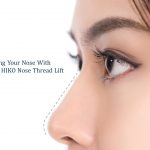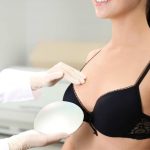Ptosis is a medical condition characterized by drooping of the upper eyelid. People of all ages can get affected by it. Although it typically develops later in life, some babies are born with it. It can also develop as a side effect of some surgical procedures, certain diseases, or even tumors.
For acquired ptosis, the most common cause identified is the weakening of the levator muscle on the eye. This muscle controls their eyelid movement and it weakens with age. Due to the non-stop workload throughout one’s lifetime, it’s not surprising that the eye muscles get overworked and need droopy eyelid treatment.
Congenital ptosis occurs due to inadequate eyelid muscle development during the fetal growth. A baby born with this condition might also suffer from:
- Abnormality in eye movement
- Muscular disorders
- Tumors of the lids
- Neurological disorders
- Refractive errors
Ailments Caused by Droopy Eyelids
People with droopy eyelids often have weak eyelid muscles. Consequently, they tend to use extra muscles around their eyes and forehead in order to improve their visual field. This continued strain on the supporting muscles results in discomfort and aggravated pain over time.
Some of the common complaints associated with droopy eyelids include aching of the eyes, dryness of the eyes, migraine, or chronic headaches caused by the strained forehead muscles.
 Babies born with ptosis are often at more risk of facing challenges due to droopy eyelids compared to adults who develop it later in life. Thus, it is essential to consult an ophthalmologist in the early stage to evaluate the condition properly.
Babies born with ptosis are often at more risk of facing challenges due to droopy eyelids compared to adults who develop it later in life. Thus, it is essential to consult an ophthalmologist in the early stage to evaluate the condition properly.
Sagging of the eyelids with an uneven level of both the right and left upper eyelids is a sign of ptosis. Saggy eyelids obstruct vision and incite the patients to tilt their head backward, raise their eyebrows, and lift the chin up for a better and improved sight.
Consequently, this leads to the development of head and neck problems over time and risk further vision deterioration.
Severe eyelid drooping constantly blocks your vision, leading to the development of a lazy eye, also referred to as amblyopia. Both eyes will have a varying vision, with one eye performing better than the other.
Moreover, the added strain on affected eyes can give rise to astigmatism, a condition that is characterized by blurred vision and poor focus.
Droopy eyelids are treatable. Even newborns with this condition can be treated with upper eyelid surgery for an optimal vision development.
Types of Upper Eyelid Surgery
There are various types of upper eyelid surgery options available for varying history and severity of the case.
1. Non-Incisional Droopy Eyelid Correction Surgery

This procedure is performed in cases of mild to moderate droopy eyelids. A suture is used to tie part of the eyelid muscle in order to reduce the muscle length. When the eyelid muscle’s length is reduced, a tightening effect is produced, and the eyelids are raised higher when opened. This procedure takes about 40 – 60 minutes and is done under light sedation or local anesthesia. The recovery period is around 7 to 10 days, and stitch removal is done 7 days after the procedure.
2. Incisional Droopy Eyelid Correction Surgery
 In moderate to severe cases of droopy eyelids, incisional corrective droopy eyelid surgery is performed. In this procedure, trimming of the extensively lengthened and overstretched eye muscle is done. The shortened muscles are then pinned upwards and sutured. This results in tightening of the muscles, eliminating excess skin and fat, and redefining upper eyelids that lift higher when opened. This procedure takes about 60 – 90 minutes to complete and is done under light sedation. Its recovery period is 10-14 days, and stitch removal is done 7 days postoperatively.
In moderate to severe cases of droopy eyelids, incisional corrective droopy eyelid surgery is performed. In this procedure, trimming of the extensively lengthened and overstretched eye muscle is done. The shortened muscles are then pinned upwards and sutured. This results in tightening of the muscles, eliminating excess skin and fat, and redefining upper eyelids that lift higher when opened. This procedure takes about 60 – 90 minutes to complete and is done under light sedation. Its recovery period is 10-14 days, and stitch removal is done 7 days postoperatively.
3. Frontalis Suspension Technique for Droopy Eyelids
The Frontalis suspension technique refers to the upper eyelid surgery performed in patients with extremely poor levator muscle function of 4mm or less. In babies with congenital ptosis, the surgery is suggested to be delayed until the age of 3 to 5 years. This is done to allow adequate time for facial growth, maturation, and patient compliance before and during the droopy eyelid treatment procedure.
The procedure is done under general anesthesia in children as part of the closed or open technique. However, local anesthesia is used in older patients to allow for better intraoperative analysis and more reliable surgical outcomes. The surgeon makes an incision in the upper eyelid and connects it to the brow using a sling-material. This uses the frontalis muscle to lift the eyelid instead of the levator muscle.
During the recovery phase, the patient might be unable to close their eyelids during sleep for a couple of weeks after the surgery. Open eyelids during sleep are, however, less of a concern in children as it rapidly improves with time. Lubrication may be required in both children and adults to prevent dryness and discomfort.
Common Faqs For Droopy Eyelid Treatment
1. Is Upper Eyelid Surgery the Only Way to Correct Droopy Eyelids?
 For mild cases, you can try warming up, which includes cleansing, warming, and gently massaging over the eyelids. This will improve circulation and enhance nerve responses. Droopy eyelid exercises can also be performed to improve the strength of the eyelid muscle. You may opt for Botox as a temporary solution to raise droopy eyelids for mild ptosis. These Botox injections tighten up the sagging skin of the eyelids. However, they need to be repeated every 6 months.
For mild cases, you can try warming up, which includes cleansing, warming, and gently massaging over the eyelids. This will improve circulation and enhance nerve responses. Droopy eyelid exercises can also be performed to improve the strength of the eyelid muscle. You may opt for Botox as a temporary solution to raise droopy eyelids for mild ptosis. These Botox injections tighten up the sagging skin of the eyelids. However, they need to be repeated every 6 months.
According to Dr. Eric Cerrati, director of facial plastic surgery at the University of Utah Health, there are a variety of options available for droopy eyelid treatment. These include a non-surgical approach such as laser technique that tightens the skin under the eyelid or other surgical techniques that involve muscle tightening, skin removal, and brow lift.
2. How Long Does Recovery Take If My Droopy Eyelids Are Corrected With Upper Eyelid Surgery?
 The recovery period for upper eyelid surgery is generally 10-14 days. However, adequate recovery can be achieved after seven days for those whose natural healing response is faster.
The recovery period for upper eyelid surgery is generally 10-14 days. However, adequate recovery can be achieved after seven days for those whose natural healing response is faster.
3. What Are The Dos And Don’ts After Upper Eyelid Surgery?
Dos after upper eyelid surgery:
- Apply ice to your eyelids frequently (about 10 minutes per hour) to reduce bruising and swelling.
- Use two pillows raise your head above your heart level while you sleep. This helps to reduce swelling around the site of surgery and enhance circulation.
- You can use homeopathic medications that promote healing to speed up the recovery.
- Experts recommend the application of topical antibiotic ointment to prevent infection. Remember to wash your hands before applying the ointment.
Don’ts after upper eyelid surgery:
- Avoid driving after surgery. Make sure to arrange your transport or have someone accompany you home after the procedure.
- Unless it is absolutely necessary, avoid applying topical ointment as it may blur your vision
- Don’t do too much exertion or strenuous exercise during the first week after the surgery. This includes avoiding gym, bending, lifting weight, and similar exercises.
- Don’t put too much pressure on the eyes or rub it with force.
Bottomline
Finally, opting for the surgery at the right time is very important. Talk to your doctor for a detailed consultation, and try to communicate your needs and desired results. However, it is important that you keep realistic expectations from your surgery and don’t go overboard in anticipating the results. Undergoing surgery from a board-certified plastic surgeon, following optimal dietary habits, and a healthy routine can play a key role in your recovery process.
About Dream Aesthetics and Plastic Surgery
Bespoke surgical for cosmetic or medical reasons is what Dream covers to bring out the beauty in every individual. Going beyond the aesthetics and working on physical anomalies are what we value the most in leading our patients to cherish self-improvement and confident lifestyles.
Derived from Associate Professor Vincent Yeow’s long-standing experience performing plastic surgery in Singapore, our treatment plans deliver physical remodelling in our patients’ favour. One of the notable remodellings is droopy eyelid correction. The ptosis surgery used for treatment eventually fixes drooping eyelids, improves vision and enhances appearance.
Most importantly, as a trustworthy plastic surgery and aesthetic clinic, we treasure positive and natural outcomes for each individual. We will ensure to deliver the beauty refinement of your dream without compromising your safety and privacy.







